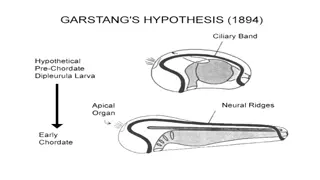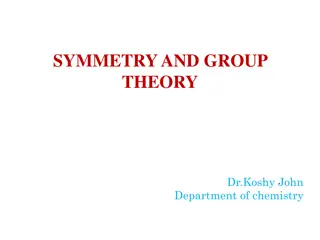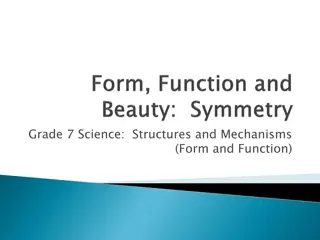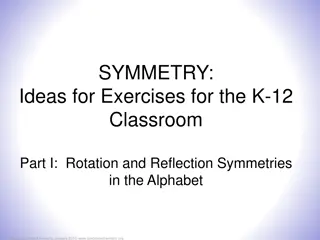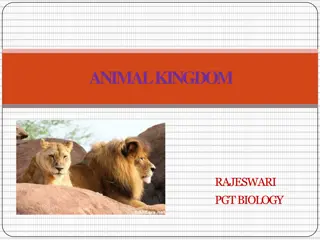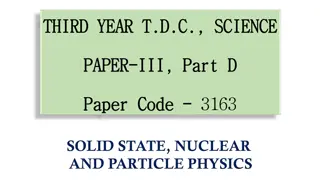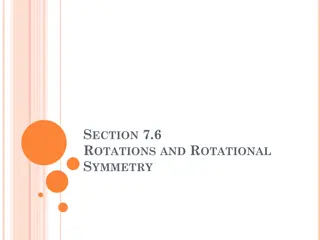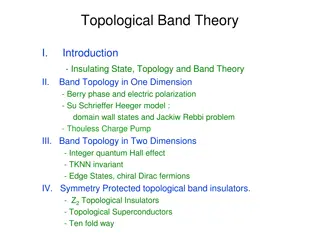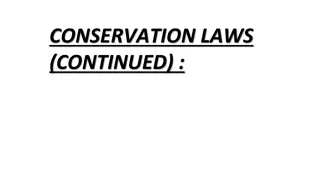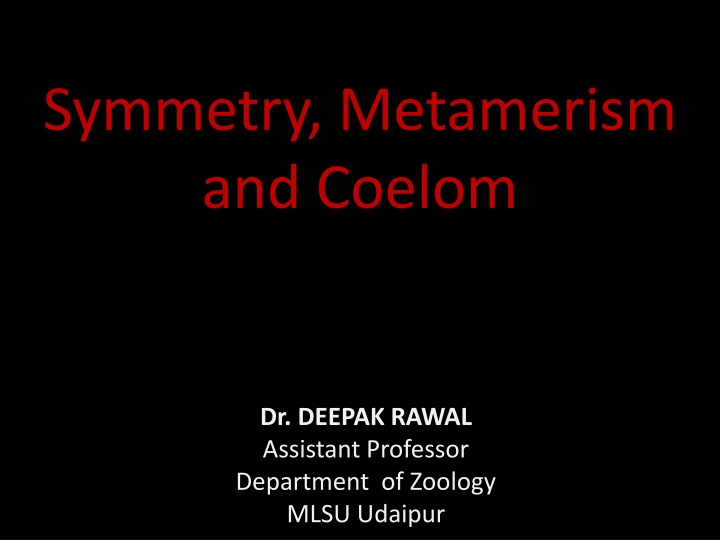
Symmetry, Metamerism, and Coelom in Zoology
Explore the concepts of symmetry, metamerism, and coelom in zoology. Understand how organisms are arranged symmetrically, segmented into similar parts, and develop fluid-filled cavities. Discover the significance of these structures in providing support, flexibility, and essential functions for different organisms.
Download Presentation

Please find below an Image/Link to download the presentation.
The content on the website is provided AS IS for your information and personal use only. It may not be sold, licensed, or shared on other websites without obtaining consent from the author. If you encounter any issues during the download, it is possible that the publisher has removed the file from their server.
You are allowed to download the files provided on this website for personal or commercial use, subject to the condition that they are used lawfully. All files are the property of their respective owners.
The content on the website is provided AS IS for your information and personal use only. It may not be sold, licensed, or shared on other websites without obtaining consent from the author.
E N D
Presentation Transcript
Symmetry, Metamerism and Coelom Dr. DEEPAK RAWAL Assistant Professor Department of Zoology MLSU Udaipur
Symmetry Def- arrangements of body parts/organs into geometrical axis/plans. Axis- imaginary line having two poles Advantages-Cepahlization, polarity, locomotion
Symmetry Division of organisms on basis of symmetry 1. Asymmetrical- eg. Sponges 2. Symmetrical- Spherical eg. Volvox Radial eg. Echinoderms eg. Platyhelminthes -Chordates Cnidarians Bilateral
Metamerism Def- division of body into linear series of similar parts/sections. Each part is called segment/somite/metamere. Hox genes are responsible for this. Head/Prostomium Trunk Tail/Pygidium
Metamerism Types- External (eg. Arthropoda) Internal (eg. Chordata {ribs, vertebrae, somites etc.} Both (eg. Annelida)
Metamerism Pseudometamerism/strobilization eg. Taenia
Coelom Def- fluid filled cavity between body wall and digestive tube covered on both side (outer and inner) by embryonic mesoderm. Triploblastic organisms Acoelomates Pseudocoelomates Coelomates Enterocoelomates Schizocoelomates
Coelom Significance of Coelom: 1. Provide space for viscera. 2. Provide flexibility. 3. Provide medium for circulation and nutrition. 4. Shok protection. 5. Collection of excretory matter.
THANK YOU 1970-Y 1950-X



